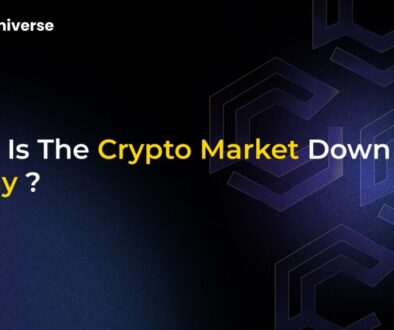Enhancing Trust in Stablecoin Transactions with Circle’s Refund Protocol

The Challenge of Trust in Crypto Payments
Cryptocurrency, particularly stablecoins like USDC, offers speed and efficiency for digital transactions. However, one significant hurdle hindering wider adoption for everyday commerce is the finality of payments. Unlike traditional credit card transactions where chargebacks and refunds are common safety nets, crypto payments are generally irreversible. This lack of recourse can make consumers hesitant to use stablecoins for purchases where disputes might arise, such as buying goods or services online.
Imagine buying a product online with stablecoins, only for it to arrive damaged or not at all. In the traditional system, you’d initiate a chargeback. In the crypto world, retrieving those funds has historically been difficult, if not impossible. This trust gap is a major friction point for crypto commerce. Circle, a major player in the stablecoin space, aims to address this very issue with its innovative Refund Protocol.
Introducing Circle’s Refund Protocol: A Safety Net for Stablecoin Users
Circle’s Refund Protocol is designed to bring a familiar layer of consumer protection to the world of ERC-20 stablecoin payments, specifically focusing on USDC. It introduces a structured, on-chain mechanism for handling disputes and processing refunds, leveraging the power of smart contracts.
Here’s how it works in simple terms:
- Smart Contract Escrow: When a payer initiates a transaction using a compatible system, the stablecoins aren’t sent directly to the recipient (e.g., a merchant). Instead, they are routed into a dedicated smart contract. This contract acts as a temporary, automated escrow agent, holding the funds securely.
- Transaction Recording: The smart contract meticulously records key transaction details, including the addresses of the payer and the recipient, and the amount transferred.
- Dispute Initiation: If a problem occurs (e.g., goods not received, service unsatisfactory), the payer can initiate a dispute directly through a compatible decentralized platform or interface.
- Mediated Resolution: The protocol allows for a designated, neutral third party (an ‘arbiter’) to step in and mediate the dispute. Crucially, this arbiter does not take custody of the funds held in the smart contract. Their power is strictly limited to resolving the specific dispute based on predefined rules or evidence.
- On-Chain Refunds: Based on the resolution outcome, the smart contract can execute a refund. It includes specific functions (like `refundByRecipient` if the merchant agrees, or `refundByArbiter` following mediation) to release the funds back to the payer’s pre-specified refund address or forward them to the recipient.
This entire process happens on the blockchain, ensuring transparency and tamper-resistance.
Why is the Refund Protocol a Game-Changer?
The introduction of a formalized refund mechanism offers significant advantages for the stablecoin ecosystem:
- Enhanced Trust and Confidence: By providing a clear process for resolving disputes, the protocol significantly boosts user confidence in using stablecoins for commerce. Knowing there’s a potential recourse reduces perceived risk.
- Improved Security: The non-custodial nature means neither the merchant nor the arbiter has direct control over the funds during the dispute, reducing counterparty risk. Funds are managed by the immutable logic of the smart contract.
- Greater User Autonomy: Payers gain more control by being able to initiate disputes and potentially receive refunds directly through on-chain operations, rather than relying solely on the goodwill of the recipient or complex off-chain legal processes.
- Bridging the Gap: It mimics the familiar refund experience of traditional finance but within a decentralized framework. This familiarity can encourage users accustomed to services like PayPal or credit cards to explore stablecoin payments.
- Wider Adoption: By addressing a key usability and trust issue, the protocol can potentially accelerate the adoption of stablecoins like USDC for a broader range of everyday transactions, moving beyond trading and DeFi applications.
Challenges on the Horizon
While promising, Circle’s Refund Protocol isn’t without its challenges. Achieving widespread success depends on overcoming several hurdles:
- Wallet and Platform Integration: For the protocol to be effective, it needs to be integrated into the wallets, payment gateways, and e-commerce platforms that users and merchants actually use. This requires broad ecosystem buy-in.
- Potential for Abuse: Like any system, there’s potential for misuse. Clear guidelines and robust arbiter selection processes are needed to prevent malicious actors (either payers making false claims or biased arbiters) from exploiting the system.
- User Experience: Specifying refund addresses, especially within custodial wallet setups, needs to be seamless. The dispute process itself must be user-friendly.
- Gas Costs: Blockchain transactions incur network fees (gas). While designed to be efficient, the costs associated with deploying the contract and processing disputes, especially for high-volume merchants, could be a consideration.
The Future of Secure Stablecoin Commerce
Circle’s Refund Protocol represents a significant step towards making stablecoin payments more practical and trustworthy for mainstream commerce. By tackling the critical issue of payment finality and dispute resolution head-on, it addresses a major pain point for both consumers and merchants.
While challenges related to adoption, integration, and cost remain, the protocol lays a vital foundation. If successfully implemented and widely adopted, it could fundamentally change how we perceive and use stablecoins, paving the way for a future where decentralized digital currency transactions are as common and secure as traditional online payments.


